Award-Winning Actor Colin Farrell Goes Above & Beyond for Global
November 3rd, 2019 by Global Down Syndrome Foundation
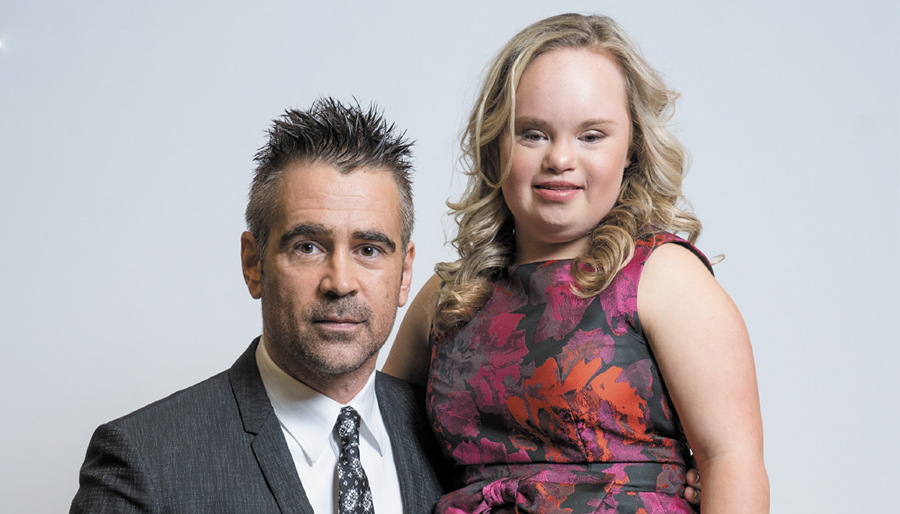
From Down Syndrome WorldTM 2019 Issue 3 of 4
Ensuring 2019 Global Ambassador Charlotte Fonfara-LaRose has a ball at the red carpet premiere of Dumbo
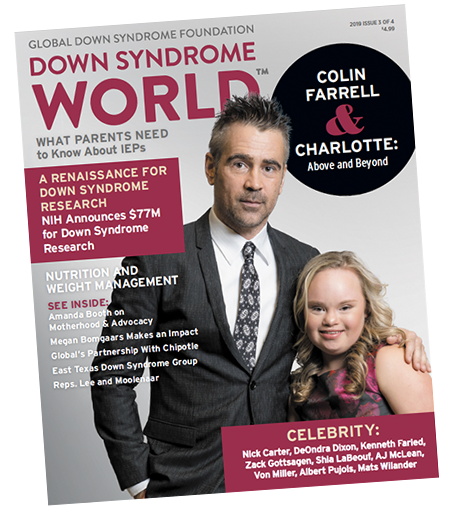 This article was published in the award-winning Down Syndrome World™ magazine. Become a member to read all the articles and get future issues delivered to your door!
This article was published in the award-winning Down Syndrome World™ magazine. Become a member to read all the articles and get future issues delivered to your door! IN MARCH 2019,Charlotte Fonfara-LaRose attended the movie premiere of Tim Burton’s live-action remake of the Disney classic Dumbo as Colin Farrell’s guest. Farrell, who plays circus stalwart Holt Farrier in the film, says, “I was so happy to see Charlotte again at the premiere, and I hope to see her again soon!”
Charlotte assures us the feeling was mutual.
“I felt like a celebrity on the red carpet — he totally remembered who I was and gave me a hug!”
Other cast members in attendance included Michael Keaton, Danny DeVito, Eva Green, and Alan Arkin. As for hanging out with other celebrities on the red carpet like Helen Mirren, Charlotte exclaims, “It was so exciting!”
This amazing opportunity stemmed from Farrell’s generous live auction donation at the Global Down Syndrome Foundation’s 10th Anniversary Be Beautiful Be Yourself Fashion Show in 2018, where Charlotte was a model and Farrell was an awardee. This year, Charlotte has been chosen as the 2019 Global Ambassador where she and her family will be honored at Global’s marquee annual fundraiser.
MEET CHARLOTTE FONFARA-LAROSE
The 16-year-old firecracker was named after her maternal grandmother, Charlotte. Charlotte is a natural activist who loves to help people.
“I help anyone feeling sad feel better by giving them a hug,” she says.
Cathy Fonfara and Scott LaRose had Charlotte in 2003. The young new parents did not learn Charlotte would have Down syndrome until she was born, causing quite a shock. However, both Cathy and Scott come from large dedicated families, who rallied in support of their beautiful new addition to the family.
“Her birth made us want to be better people, and we wanted better for her,” says Cathy. “She is really the reason that we have such a great relationship and that we are a loving family together.”
Scott recalls that his father, who was an engineer and probably knew the least about Down syndrome in the whole group, came to them two days after Charlotte’s diagnosis with a binder of information.
“It was a very touching way to approach things, and I think it certainly helped us dig in a little bit,” Scott tells.
Sixteen years later, the family remains close. The Fonfara and LaRose families have a unique arrangement that works well for them and gives Charlotte lots of quality time with her large extended family.
“Scott and I are no longer a couple, but we are a family and we will always be a family,” says Cathy. “We vacation together, we go out to dinner as a family, and we spend every holiday together as a family.”
Charlotte lives full time with her mom and 8- year-old sister, Noelle, in Annapolis, Maryland. Scott is a ver y attentive father who is involved in every aspect of Charlotte’s life. Charlotte also has special relationships with both her grandmothers: Cathy’s mom, whom she calls “Oma,” and Scott’s mom, whom she calls “ Gigi.”
Charlotte is an inspiration to her family and a role model to her little sister, classmates, and peers. She doesn’t let Down syndrome get in the way of pursuing her dreams, and she lives her life as any typical 16-year-old. She loves horseback riding, swimming, paddleboarding, and traveling. In fact, she’s traveled to over 30 states and 10 countries with her family! She has a boyfriend named Zach, whom she has known since childhood, and they love going on sushi dates. Charlotte has dreams of owning a bagel shop one day, marrying Zach, and living in a blue and red home together.
Charlotte has inspired her mom into action.
“Over the years Charlotte has shown me that all she needs is what all children need: love, support, and encouragement,” says Cathy. “She also has helped me to educate doctors, teachers, and school administrators about the ability and potential of people with Down syndrome.”
GLOBAL’S 2019 AMBASSADOR
This year, Charlotte and her family are thrilled to be named an Ambassador family at the 2019 Be Beautiful Be Yourself Fashion Show. The event is the largest fundraiser for Down syndrome in the world. Over 1,400 self-advocates, families, Hollywood and sports celebrities, community philanthropists, and government leaders attend each year.
Charlotte and her family are no strangers the star-studded evening, though. Cathy and Charlotte were introduced to Global when Zach was in Global’s Washington, D.C. Gala in 2013. Charlotte and Zach danced on the runway together during a performance by Sheryl Crow!
“When we attended our first fashion show, we were astounded by the effort, quality, and attention that Global put into providing such a beautiful and festive event to showcase the beauty of individuals with Down syndrome,” says Cathy.
While she is always impressed by the famous and influential people who come out to support the show every year, Cathy is clear.
“The best part is when the models walk the runway, unintentionally stealing the spotlight from those celebrities escorting them,” she says. “The pride and joy on the models’ faces is indescribable and inspiration is palpable.”
Charlotte and her family have now attended seven Global fashion shows.
COLIN FARRELL’S SPONTANEOUS AND IMPROMPTU GENEROSITY
In 2018, at Global’s 10th Anniversary Be Beautiful Be Yourself Fashion Show, guests went wild for the 25 models with Down syndrome, including Charlotte. They were also brought to their feet by two inspiring recipients of Global’s Quincy Jones Exceptional Advocacy Award — Zack Gottsagen and Colin Farrell.
Farrell is an award-winning Irish actor and activist. He received his first Golden Globe for In Bruges and was nominated for multiple awards for his performance in The Lobster, starring opposite Rachel Weisz. More recently he has star red in the Harry Potter spin-off prequel, Fantastic Beasts and Where to Find Them, The Killing of a Sacred Deer with Nicole Kidman, Roman J. Israel Esq. with Denzel Washington, and the Disney live-action film Dumbo directed by Tim Burton.
Farrell uses his public platform to support organizations he is passionate about. He serves a celebrity partner for the United Nations’ World Food Programme, was an official spokesperson for the Special Olympics World Games in Shanghai, and supports nonprofits focused on the differently-abled community in tribute to his son, James.
As a father to a son with Angelman syndrome, Farrell has supported the Foundation for Angelman Syndrome Therapeutics for over a decade. He credits his son with making his life more meaningful and fulfilling.
“James’ very existence has changed so much about my life and how I preserve my own life selfishly being a caretaker and having the gift of being a protector and a provider for James, and as someone who loves him endlessly, someone who has watched his growth from infant to child to teenager now and approaching his young manhood,” he says. “James’ strength and bravery, his individuality and yet his commonality are things I’m constantly struck by.
“And, of course, as a result of his existence, it has afforded me the great gift of being involved in the lives of other families who care for a child who is differently-abled,” Farrell continues. “I’ve been touched by and allowed to be close to families who share the struggles of just being a par ent first and foremost but also the extra struggles that can arise from being a parent of a child who is differently-abled. James’ enrichment of my life is beyond measure.”
Indeed, James and his work benefiting the differently-abled brought Farrell to Denver last year to receive Global’s highest honor. During the fashion show’s live auction, Farrell jumped up on stage alongside Jamie Foxx, Jeremy Renner, Von Miller, and John C. McGinley and spontaneously offered a trip to Hollywood and tickets to the premiere of Dumbo. Impressed and moved by Farrell’s generosity, Charlotte and her mom decided to bid on the tickets, and they won!
At the fashion show, Farrell took photos with Charlotte and all the models with Down syndrome, and spoke to reporters on the red carpet.
“Seeing all of the members of the community walking down the runway and seeing how much they were empowered, and how the models and every single person in the audience was enraptured, seeing this as an indelible moment and celebration of their lives, and their brilliance as human beings and spirits both individually and as a community, was extraordinarily enriching and also emboldening to observe,” Farrell says.
“What a class act to not only support Global with his presence at the gala but to also offer an ex citing item to raise more money,” says Cathy. “And then be so down to earth and caring to make my sweet Charlotte feel so special.”
FIGHTING DISCRIMINATION AND OVERCOMING CHALLENGES — A REWARDING LIFE
Thousands of guests travel from all over the world to see Global’s iconic fashion show, where models with Down syndrome rock the runway with their celebrity escorts. The evening gives attendees an opportunity to learn, network, and support Global’s work. Through ticket and table purchases, model sponsorships, silent and live auction bids, and general donations, the proceeds from Global’s Be Beautiful Be Yourself Fashion Show benefit their affiliates’ important work in research and medical care.
“The underlying theme of the fashion show is actually human and civil rights, and our event gets to flip an old, negative paradigm on its head,” says Michelle Sie Whitten, President and CEO of Global. “From very active members of the Global community to people who are completely new to Down syndrome, everyone leaves feeling they are a part of something bigger than themselves.”
Charlotte’s family agrees.
“We’ve faced some heartbreaking discrimination in the education system, with teachers creating restrictive learning environments and blatantly excluding kids with special needs,” says Cathy. “One of the many great things that Global does is helping every individual with Down syndrome with education from academia to life skills. They work with parents and their children on their IEPs (individualized education programs), and they are now developing an education center at their new headquarters to focus on vocational training.”
Global aims to show the world that people of all abilities , like Charlotte and James, should have the opportunity to reach their full potential and live happy, rewarding lives.
“Educating our medical professionals and our community is important,” says Farrell. “Imagine you are told your child may never walk and then you see your child take his or her first steps a couple of weeks short of their fourth birthday like James did. The profundity and the emotional magnitude are overwhelming and must be shared with others to educate how y our child’s future is communicated. So there will be great challenges with your child like any child, but the rewards can be unimaginable and even more magnified.”
WORKING HARD TO CREATE HEALTHY LIVES
Global’s Ambassadors and models help raise awareness and advocate for people with Down syndrome to have equal access to transformative research, lifesaving medical care and other opportunities. And who’s at the top of Global ’s contact list for this? The U.S. government. Down syndrome has been one of the least-funded genetic conditions by the National Institutes of Health (NIH) for nearly 20 years, despite being the leading cause of developmental delay in the U.S. and the world.
Angelman syndrome is also a genetic condition. Farrell says that although he was saddened to learn about this disparity in funding, he wasn’t surprised.
“I think maybe the reason for this is a bittersweet one,” Farrell says. “Because people with Down syndrome are often presented as loving and happy, members outside of the community may think there’s no help needed. And it’s our job to teach others that people with Down syndrome need specialized medical care and research and, frankly, help throughout their lives and raise awareness.”
Farrell is optimistic about the progress in research for various genetic conditions “It’s an exciting time in science, and the future is looking brighter for our children than ever before.”
Over a decade of Global lobbying Congress and collaborating with the NIH has resulted in a tripling of the NIH’s Down syndrome research budget, from $27 million in 2016 to $77 million in 2019.
“Through Global, we have come to understand that people with Down syndrome have a different disease profile and that they need specialized medical care throughout their lives,” says Scott. “I was shocked to learn that there are no updated, evidence-based medical care guidelines for adults with Down syndrome. We are hugely grateful to Global and the experts who are working to create those for Charlotte and our community.”
“Global’s amazing work in advocacy, medical care, research, and government legislation will help my daughter and others with Down syndrome be able to live the lives they want and the lives all parents wish for their children,” says Cathy.
“Global’s work is so important because they help find the best treatments for people with Down syndrome who are sick,” Charlotte adds.
The connections between Down syndrome and cancer research are particularly important to the family. In 2016, Charlotte’s friend Mary Miller was diagnosed with leukemia. Charlotte and Mary, both born with Down syndrome, have been friends since appearing as models in Global’s 2014 Be Beautiful Be Yourself Fashion Show. Motivated by Mary’s fight against leukemia and their desire to fund critical Down syndrome research, Cathy and Scott funded a Basic Science Grant to Joaquín Espinosa, Ph.D., and his team at the Linda Crnic Institute for Down Syndrome at the University of Colorado Anschutz Medical Campus. Additionally, Charlotte’s grandmother Gigi has cancer, and as always, the family is supporting her every step of the way.
“Charlotte has a heart of gold and is already a champion for others who are sick or who she feels are disadvantaged in some way,” says Cathy. “She was just born that way, and we can’t wait to see what challenging projects and work she will take on going forward.”
“As a parent, Charlotte is my number one priority,” says Scott. “I want to make sure she receives everything she needs to reach her potential. By supporting Global, we have the luxury of not only helping Charlotte, but helping all people with Down syndrome and that’s an amazing feeling.”
Charlotte will be featured at Global’s Be Beautiful Be Yourself Fashion Show on Saturday, Nov. 2. Farrell encourages everyone to support her.
“I would recommend anyone who gets a chance to support Global and the Be Beautiful Be Yourself Fashion Show in Denver try and make the trip. Charlotte and everyone with Down syndrome deserve your attention. The event itself is love, community, harmony, unity, and unbridled hope for our future.”
“Whether she is being poked and prodded for medical tests, being underestimated by teachers at school, or having people staring at her as she walks down the street, Charlotte has always been brave, resolute, and true to herself. She is truly a great role model and Ambassador.”
Charlotte is excited to apply her strength and passion to her new role with Global.
“As Global’s Ambassador, I hope to help other people with Down syndrome be healthier through medical research, to bring attention to Global’s mission, and to bring respect to people with Down syndrome.”
Like this article? Join Global Down Syndrome Foundation’s Membership program today to receive 4 issues of the quarterly award-winning publication, plus access to 4 seasonal educational Webinar Series, and eligibility to apply for Global’s Employment and Educational Grants.
Register today at downsyndromeworld.org!
Understanding Behavioral Challenges
September 19th, 2019 by Global Down Syndrome Foundation
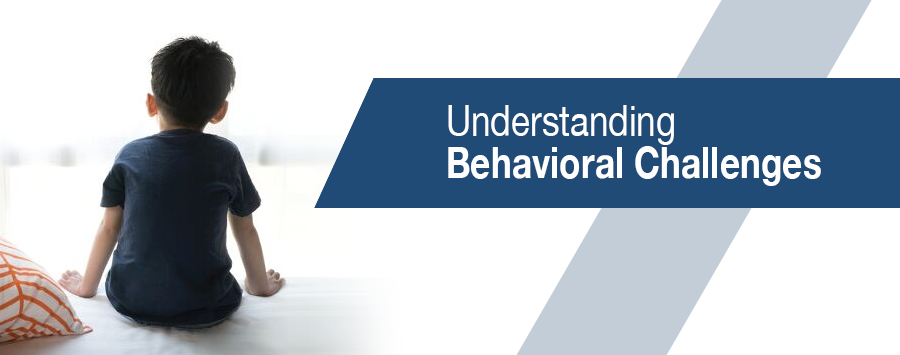
An important study in the journal of mental health research in intellectual disabilities shows that children with Down syndrome demonstrate increased behavioral issues compared with their typical peers. Early intervention and a development strategy can help.
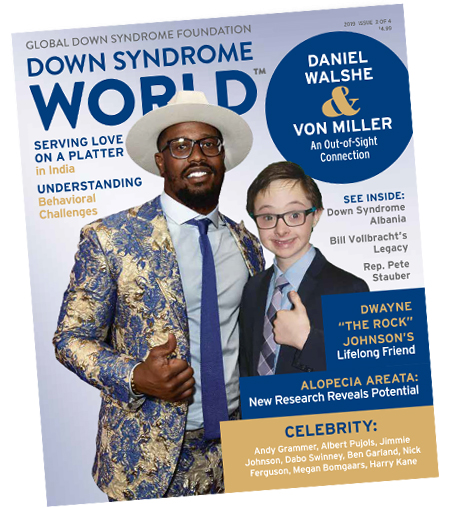 This article was published in the award-winning Down Syndrome World™ magazine. Become a member to read all the articles and get future issues delivered to your door!
This article was published in the award-winning Down Syndrome World™ magazine. Become a member to read all the articles and get future issues delivered to your door! A STUDY CONDUCTED by doctors at the Anna and John J. Sie Center for Down Syndrome at Children’s Hospital Colorado, an affiliate of the Global Down S yndrome Foundation, found that 94% of children with Down syndrome experienced one or more behavioral challenges on a w eekly or even daily basis. These behaviors include wandering off, refusal to follow instructions, aggression, impulsivity, and difficulty transitioning from activity to activity. Behavioral challenges can not only impact a child’ s quality of life but also cause major str esses for parents, teachers, and other caregivers.
In the study, Lina Patel, Psy.D., and her three co-authors, Kristine Wolter-Warmerdam, Noel Leifer, and Francis Hickey, M.D., analyzed current tools for measuring behavior in children with Down syndrome to determine which methods were effective and which could be improved upon. They also surveyed parents to learn about which behaviors were the most common and if any challenges shared a common denominator. The doctors published their results in late 2018.
Children with Down syndrome have many positive behavioral traits, and typical children certainly have negative behavioral issues. However, because of lack of research, behavior issues in children with Down syndrome are less understood. Behavioral challenges can hamper a child’s ability to function independently, perform well in school or other social settings, and even handle everyday tasks, such as bathing and dressing, at home. By understanding what can trigger certain behavioral issues, parents and teachers can better develop strategies to intervene before issues progress.
COMMUNICATION TOOLS: A COMMON DENOMINATOR
A variety of factors may fuel undesirable behaviors, according to Dr. Patel, lead author and D irector of Psychology at the Sie Center.
“I feel like motivation is a key factor,” Dr. Patel says. “It doesn’t mean that children with Down syndrome are unmotivated. It might just mean they are motivated by their own interests versus the task at hand, which then may result in behavioral challenges.”
Dr. Patel and her co-authors wanted to know which behaviors parents of children with Down syndrome found most concerning. They asked parents of 274 children seen at the Sie Center from 2010 to 2015 to fill out a specially designed questionnaire. On the questionnaire, parents were asked to state the frequency with which 16 behavior challenges occurred and their level of concern about each. Parents could also name additional behavioral challenges not listed on the form. The study is one of the largest of its kind and the results were not completely anticipated.
Noncompliance, wandering, sitting down and refusing to move, and aggression were the most common difficult behaviors parents reported. The amount and frequency of challenging behaviors was much higher than previously reported in scientific literature, with nearly 100% of parents noting the existence of challenging behaviors at least weekly.
“The most striking result we found was the frequency of behavioral challenges,” Dr. Patel says. “I think we did capture a wider array of behaviors, resulting in a higher percentage of children experiencing those behaviors. The good news is that many of the behavioral challenges that we assessed can be addressed using behavioral strategies that are informed by neurodevelopment.”
Neurodevelopment is the brain’s development of neurological pathways that influence areas including memory, intellectual functioning, attention, and focus.
The researchers also wanted to determine if any of these behavioral challenges shared a common denominator. They found that the inability of a child to effectively communicate his or her wants and needs was associated with many behavioral challenges.
“Behavior is a form of communication people use when they do not have access to other methods of communication, like verbal communication,” Dr. Patel explains. “Therefore, it’s not surprising that individuals with Down syndrome would have more behavioral challenges if they do not have more functional communication strategies.”
TAKE ACTION EARLY
The longer parents allow unwanted behaviors to persist, the more ingrained these behaviors may become.
“Behavioral interventions can make a difference and really change behavior,” says Elise Sannar, M.D., Assistant Professor of Child and Adolescent Psychiatry at Children’s Hospital Colorado. “If [parents] just live with [a behavior], it’s definitely not going to get better. If kids with Down syndrome learn that if they have a tantrum or refuse to move, they’ll get what they want, that will be reinforced, and they’ll continue to engage in that behavior.”
When concerning behaviors arise, parents should notify their child’s pediatrician or primary care physician as soon as possible so medical causes can be ruled out. Many behavior issues can be triggered by medical ailments to which children with Down syndrome are more predisposed. One such medical ailment is obstructive sleep apnea, which is found in up to 70% of children with Down syndrome.
In addition, parents should pay attention to the context of behavioral challenges — when, where, and with whom they occur, and what happens before and after them, says Anna Esbensen, Ph.D., Associate Professor, Research Director at the Jane and Richard Thomas Center for Down Syndrome in the Division of Developmental and Behavioral Pediatrics at Cincinnati Children’s Hospital Medical Center.
These clues can provide important information about why behaviors occur. Parents who are concerned about a behavior that happened when they weren’t around can ask their child’s friends, teacher, or employer for information about what took place.
“Teaching the child a replacement behavior or a different way of achieving or communicating their needs are helpful ways of teaching an adaptive … method of achieving their desired function,” Dr. Esbensen explains.
She continues, “Once we understand the function of the child’s behaviors, there are evidence-based strategies that can be used to modify that behavioral challenge.”
According to Dr. Sannar, one such strategy is applied behavior analysis (ABA), which uses a variety of techniques, such as positive reinforcement, to increase helpful behaviors and decrease damaging ones. ABA can be effective in children with Down syndrome, autism, and other conditions associated with behavioral challenges.
For example, Dr. Patel says, ABA can be used to stop a child with Down syndrome from running or wandering away from caregivers, also called elopement. A behavioral analyst can collect data to better understand why the child is eloping — is he or she bored, trying to avoid a difficult task that is hard, or eager for attention? Once the analyst has an answer, he or she can create a plan to address it. For example, if the child is avoiding work that feels too hard, the analyst can slowly increase a task’s difficulty or teach the child to ask for a break.
Helping people with Down syndrome manage behaviors is important, not only for their success in school and social situations but also as they enter adulthood, says Dr. Patel.
“Many individuals with Down syndrome who have the skill to seek employment may not be able to if they have behaviors that interfere with their job,” she advises. “It may be more difficult to gain independence with things like staying home alone or even living with others if these behaviors are not addressed.”
While it is more difficult to change longingrained behaviors, therapies and strategies exist that help adults, and studies are starting to address this older population.
The researchers plan to develop a more comprehensive tool to capture the full range of behavioral health challenges that children
with Down syndrome experience. They hope such a tool would help pediatricians and other community providers determine when to refer children to a behavioral health specialist. Most importantly, by understanding and analyzing. these behaviors, they hope to empower both individuals with Down syndrome and their parents to take necessary actions to improve and maintain appropriate behaviors.
Like this article? Join Global Down Syndrome Foundation’s Membership program today to receive 4 issues of the quarterly award-winning publication, plus access to 4 seasonal educational Webinar Series, and eligibility to apply for Global’s Employment and Educational Grants.
Register today at downsyndromeworld.org!
An Out-Of-Sight Connection
September 12th, 2019 by Global Down Syndrome Foundation
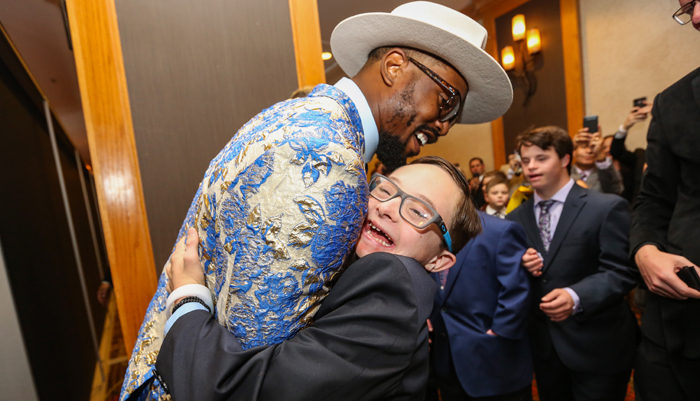
Last year, the Global Down Syndrome Foundation’s 10th Anniversary Be Beautiful Be Yourself Fashion Show brought together two very different football fans: Denver Broncos Lineback Von Miller and one of his biggest Admirers, sports-loving 14-year-old Daniel Walshe. The two connected over their love of the game – and fashionable eyewear.
 This article was published in the award-winning Down Syndrome World™ magazine. Become a member to read all the articles and get future issues delivered to your door!
This article was published in the award-winning Down Syndrome World™ magazine. Become a member to read all the articles and get future issues delivered to your door! FOR MODELS AND ATTENDEES ALIKE, Global’s annual Be Beautiful Be Yourself Fashion Show is an unforgettable, magical experience. For Global participant Daniel Walshe, the fashion show was a chance to meet one of his longtime heroes, Super Bowl 50 MVP Von Miller. In 2011, Von was drafted by the Broncos as the No. 2 overall draft pick from Texas A&M University. Since then, the seventime Pro Bowl linebacker has posted the most sacks in the NFL. Daniel, a Broncos superfan, owns a Von Miller jersey and even rocks thick black-rimmed glasses because they look like Von’s trademark frames. Von was standing in front of the ballroom entrance when Daniel saw him, and Von greeted him with a big bear hug.
“Von was nice and friendly!” Daniel remembers..
“Both of them looked like they were having such a good time,” says Elaine Walshe, Daniel’s mom. “In fact, Daniel was so excited that a couple weeks later, he convinced us to take him to his first Broncos game to see his new friend in action.”
“I heard great things about Global’s fashion show from some of my current and former teammates that participated, like Peyton Manning and Brandon McManus,” Von says. “I went in not really knowing what to expect but wanted to go and show support for the event. I left being totally impacted by the type of community surrounding Global and the things they do. It was definitely lifechanging for me.”
TACKLING ADVERSITY & CREATING CHANGE
Being the successful athlete and force of nature on the football field that he is, it’s difficult to imagine a guy like Von Miller feeling self-conscious. But when he was a skinny, glasses-wearing fifth grader in Texas, Von didn’t feel destined for a career in professional football. In fact, at first, he had to beg his father to allow him to join a youth football team at the time because his father didn ’t believe he was ready to play. When Von finally began playing, he remembers enduring taunts from other children about his sports glasses.
“I started wearing glasses in second grade,” Von tells. “At first, I’m not going to lie, it was horrible. It wasn’t cool. When I found out I had to wear glasses, I was sad and depressed about it, but over time, I just grew into them, and they became ‘me.’ That’s how I can relate with so many kids who have glasses.”
After establishing himself as a successful professional football player in the NFL, Von was able to turn his childhood insecurities and fears into a way of inspiring children and boosting their confidence.
In 2012, he established Von’s Vision, a philanthropic organization that provides free eye exams and glasses to low-income children in the Denver area. To date, the organization has raised $5.1 million and provided over 8,500 Denver students with free eye care services. Throughout the year, Von’s Vision also funds portable optical exam centers so children in the community can get the eye exams they need.
Von was awarded the 2017 Broncos’ Community Impact Award for his charitable influence. Every spring, the team rallies in support of Von and hosts Von’s Vision Day Celebration at Broncos Stadium at Mile High. Children from identified schools and community organizations are invited to receive free eye screenings and exams. Additionally, participants are given the chance to meet Von.
“There are so many wonderful things we’ve done with the organization,” Von says proudly. “When we created Von’s Vision, I was happy to help one or two kids. To help so many kids and raise so much money for glasses is amazing. I have a wonderful team behind me that has blessed me and allowed me to impact so many lives.”
Up to 50% of people with Down syndrome will need glasses. The most common vision problems include farsightedness, nearsightedness, strabismus (crossed eyes), and astigmatism (blurred vision). Daniel started wearing glasses in kindergarten to address his farsightedness and astigmatism.
Von’s philanthropy work with eyesight and vision issues are very important and relevant to the Down syndrome community, and he understands exactly why.
“For some people with Down syndrome, it’s not that they can’t read, they just can’t see,” Von says. “They have a hard time being able to see words on a paper. That’s my life right there. I’ve always had problems with vision. I know what it feels like to have corrective vision, and I know what type of impact that can have on your life.”
Daniel is a big admirer of Von’s distinctive eyewear.
“When we went shopping for a pair of glasses a couple of years ago, Daniel was thrilled to find a pair of iconic thick black-rimmed glasses that looked like ones he’d seen on Von,” Elaine says.
Thanks to role models like Von, Daniel lets nothing stand in his way. He has faced several health problems, including chronic sinus and thyroid issues and sleep apnea, to which individuals with Down syndrome are predisposed. Daniel has benefited from medical care at the Anna and John J. Sie Center for Down Syndrome at Children’s Hospital Colorado, a Global affiliate, and knows how to have an active and healthy lifestyle. Daniel continues to pursue activities he loves, including swimming on a local rec team and playing Ultimate Frisbee and basketball on his middle-school team.
ADVOCATES FOR GLOBAL
The Walshe family became part of the Global family in 2010. Daniel met the Global staff and many new friends through medical visits and various Global events and programs.
“Global has been a tremendous support to Daniel, both socially and medically,” says Elaine. “The amount of Down syndrome resources they provide and access to specialists is incredible.”
“When we had Daniel, we were piecemealing together what medical areas were important and which doctors we should go see, just within different moms’ groups,” Elaine continues.
She adds, “Now you can go to the Sie C enter, and they will assess y our child and say, ‘Go see this specialist and that ther apist, and here’s what you need to do.’ It’s a one-stop shop, and they schedule the appointments for us. It’s been a life-changer.”
With access to great health care, Daniel has been able to participate in a variety of
Global’s Dare to Play programs, improving on his skills in soccer, football, dance, tennis, and more.
“It’s been an opportunity to meet other kids who have Down syndrome who have similar
interests,” Elaine says. “Without those programs, he probably wouldn’t have met all the wonderful friends he has.”
Daniel was also a model in Global’s 2014 Be Beautiful Be Yourself Fashion Show,
and the family continues to at tend the event every year. At the 2018 Be Beautiful Be Yourself Fashion Show, Daniel got to witness one of his heroes, Von, escort Global Ambassador DeOndra Dixon, down the runway. With encouragement from Oscar-winner Jamie Foxx, Von even put his gold suit with a blue floral pattern up for live auction. To the audience’s delight, then-Broncos quarterback Case Keenum purchased the jacket. The funds will underwrite important research and medical care for people with Down syndrome.
LOOKING FORWARD TO WHAT’S NEXT
A successful soon-to-be eighth grader who loves football stats and U.S. presidential history, Daniel is already thinking about starting high school. His parents anticipate he will go to college, enter the workforce, and enjoy an independent adult life. And Daniel has an even bigger goal — he wants to become a police officer.
“People with Down syndrome can do pretty much what they have the opportunity to do,” Elaine says.
As for Von, he is full of optimism as he prepares for his ninth NFL season
with the Broncos and a new head coach. He may be focused on the future, but he still reflects fondly on the Be Beautiful Be Yourself Fashion Show, where his life became a little richer.
“There is just so much love [from people with Down syndrome],” Von says. “I gave so many hugs that night. I walk into our facility every day with my teammates, and don’t even hug those guys, but every single person [at the fashion show] gave so much love. It was amazing.”
Like this article? Join Global Down Syndrome Foundation’s Membership program today to receive 4 issues of the quarterly award-winning publication, plus access to 4 seasonal educational Webinar Series, and eligibility to apply for Global’s Employment and Educational Grants.
Register today at downsyndromeworld.org!
Global Thanks Congress, President and the White House for Maintaining Special Olympics Funding
April 2nd, 2019 by Global Down Syndrome Foundation

At Global, we were shocked about the suggestions to cut the already scarce funding for students with special needs (12% of our students BTW!) and to completely defund Special Olympics. This past week, we saw our congressional heroes fiercely support maintaining funding, including leadership from both sides of the aisle – Congresswoman Rosa DeLauro (D-CT) and Senator Roy Blunt (R-MO) (both Global’s Q-Award Winners). THANK YOU!
We are pleased that Congress and President Trump heard the concerns of those who are differently-abled and that the government will continue to support the incredible Special Olympics program. PLEASE make sure you also safeguard funding for our students with special need in public school who deserve a chance to learn and reach their potential!
Down Syndrome Research Could Provide Important Insights Into Cancer Treatments
March 8th, 2019 by Global Down Syndrome Foundation
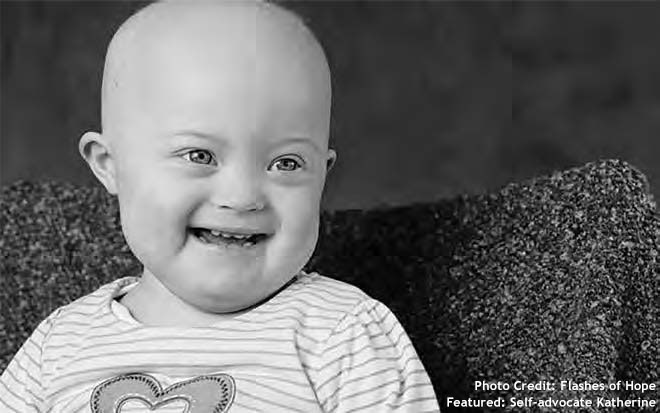
From Down Syndrome World Issue 4 2018
People with Down syndrome are highly protected from most solid tumor cancers, and yet they are highly predisposed to certain blood cancers. Studying people with Down syndrome may lead to new cancer treatments that could benefit everyone.
ACCORDING TO THE AMERICAN CANCER SOCIETY, an estimated 1,762,450 new cases of cancer will be diagnosed in 2019. There are hundreds of types of cancers and different ways to categorize them. One way to categorize cancer is into two types — solid tumor cancers and blood, or hematological, cancers.
People with Down syndrome are highly protected from most solid tumor cancers, such as breast, uterine, and prostate cancers. However, people with Down syndrome are much more likely to develop certain leukemias, one of the key blood cancers found predominantly in children.
IN SEARCH OF ANSWERS
World-renowned cancer researcher Joaquín Espinosa, Ph.D., Executive Director of the Linda Crnic Institute for Down Syndrome, has studied cancer biology for years. He was an early career scientist of the Howard Hughes Medical Institute before a grant from the Global Down Syndrome Foundation opened his eyes to the broad implications of investigating the connection between cancer and Down syndrome.
“My mentor, Tom Blumenthal, was the director of the Crnic Institute and insisted I apply for a grant,” says Dr. Espinosa. “I had no idea that the science would be so fascinating and that I would come to feel that people with Down syndrome are like my extended family.”
Three years later, Dr. Espinosa and his team discovered that the extra copy of chromosome 21 in people with Down syndrome triggers an immune system process called the interferon response, which may have a significant bearing on cancer risk.
“From birth, the immune system of people with Down syndrome is very dysregulated,” Dr. Espinosa says. “It’s out of balance, so aspects of it are hyperactive and others are weakened. The hyperactivity may explain why solid tumor cancers are not allowed to grow and, therefore, why it is rare for people with Down syndrome to get most solid tumor cancers. Conversely, it may also explain why autoimmune disorders are so prevalent.”
Other researchers hypothesize that chromosome 21 contains one or more tumor-suppressing genes, which may explain why having an extra copy of the chromosome protects against solid tumors, and that the chromosome also contains genes that spur the development of leukemias.
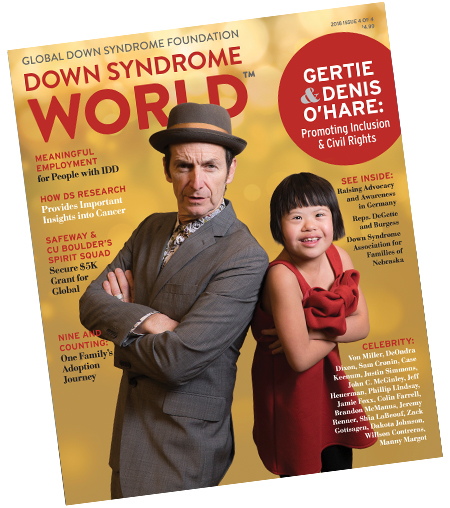 This article was published in the award-winning Down Syndrome World™ magazine. Become a member to read all the articles and get future issues delivered to your door!
This article was published in the award-winning Down Syndrome World™ magazine. Become a member to read all the articles and get future issues delivered to your door!
LUKEMIA: AN EARLY CHILDHOOD RISK
Children with Down syndrome are particularly susceptible to two types of leukemia: acute megakaryoblastic leukemia (AMKL) and B-cell acute lymphoblastic leukemia (B ALL), the most common subtype of acute lymphoblastic leukemia (ALL).
They are also uniquely susceptible to one bone marrow disorder that results in a higher risk of AMKL called transient myeloproliferative disorder (TMD). TMD, also called transient leukemia, is found only in newborns with Down syndrome. As many as 30 percent of babies with Down syndrome are born with TMD, and although it can cause severe or life-threatening problems, the overwhelming majority of cases resolve naturally by the third month of life.
However, infants with TMD are at increased risk of developing acute myeloid leukemia (AML), which can strike children all the way through the teenage years. In particular, children with Down syndrome between ages 1 and 5 are 150 times more likely than typical children to develop AMKL, a rare type of AML. AMKL is a life threatening leukemia in which malignant megakaryoblasts proliferate abnormally and injure various tissues.
While the risk for AMKL is consider ably higher, many studies report better outcomes for patients with Down syndrome compared with their typical counterparts. Children with Down syndrome who develop AMKL have a roughly 80 percent five year event-free survival rate, which is substantially better than that seen in typical children with this leukemia, according toJohn Crispino, Ph.D., Robert I. Lurie, M.D. and Lora S. Lurie Professor of Medicine at Northwestern University.
“Nevertheless, not all children with Down syndrome survive the disease, and survival rates for those who relapse even after a bone marrow transplant are abysmal,” Dr. Crispino says.
Dr. Crispino’s lab has several areas of focus including acute leukemias and myeloproliferative neoplasms, and he is considered one of the leading authorities regarding leukemia in patients with Down syndrome.
According to Dr. Crispino, there is a 20-fold increased risk of B-ALL in children and young adults with Down syndrome primarily from ages 5 to 20. B-ALL is an aggressive type of leukemia in which too many B-cell lymphoblasts are found in the bone marrow and blood.
Unlike AMKL, reports and studies show that patients with Down syndrome with B-ALL fair worse than their typical counterparts — they have a higher relapse rate, may suffer severe side effects from chemotherapy, and have higher treatment-related mortality.
According to Dr. Crispino, part of the problem could be attributed to the attending physicians’ lack of adherence to the different chemotherapy protocols for pediatric patients with Down syndrome. Patients with Down syndrome often react poorly to standard chemotherapy for B-ALL, and their “toxicity profile” means more side effects that can result in extreme loss of red and white blood cells and platelets, inflammation in the digestive tract, and even heart failure.
“These patients need modified treatment protocols and universal supportive care guidelines that are optimal,” says Dr. Crispino. “Including patients with Down syndrome in studies of novel agents, such as immunotherapy and JAK inhibitors, could also help address this problem.”
Global’s lobbying and advocacy effor ts, resulting in a $24 million increase in Down syndrome research at the National Institutes of Health (NIH) in 2018, certainly led to an increase in cancer research in this special population, but there is still a long w ay to go. Dr. Crispino believes we desperately need less toxic and more effective therapies, especially to prevent relapse and treatment related mortality in patients with Down syndrome. He advocates for research at the NIH that would determine why Down syndrome leads to the increased incidence of leukemia and identify novel drug targets that will lead to development of safer treatments, and for leveraging new technologies that will identify specific genes on chromosome 21 linked to leukemia.
While leukemia does not always cause symptoms, Karen Rabin, M.D., Ph.D., Associate Professor of Pediatric Hematology/Oncology and Director of the Leukemia Program at Texas Children’s Cancer Center and Baylor College of Medicine, says parents should look out for bone pain, difficult y walking, easy bruising or bleeding, pallor, prolonged and unexplained fevers, and swollen glands in the neck and elsewhere.
A complete blood count can detect leukemia in some cases but is not recommended unless symptoms are present, according to Dr. Rabin. Chemotherapy is the standard treatment for most acute leukemia. But immunotherapy — a class of therapies that train the immune system to target cancer — is an emerging option.
“Immunotherapy is not generally used for newly diagnosed ALL at this time, but it is a very effective treatment in cases of relapse,” Dr. Rabin explains. “I particularly recommend early consideration of immunotherapy for relapsed ALL in children with Down syndrome because they are at high risk of serious complications when treated with standard relapse chemotherapy regimens.”
RESEARCH THAT BENEFITS EVERYONE
Of the 1.7 million new cancer cases estimated to be diagnosed in the United States in 2019, it is impossible to know how many of those cancers will occur in people with Down syndrome, according to Dr. Espinosa. Regardless, studying cancer in this population benefits anyone who develops the disease. Dr. Rabin agrees.
“We first discovered a major class of genetic alterations in ALL by studying ALL samples from children with Down syndrome, where the alterations are much more common than in other ALL cases,” she says. “This has led to a clinical trial of ruxolitinib, an inhibitor targeting this pathway, as a new treatment for ALL.”
Dr. Espinosa and his team at the Crnic Institute, with financial support from Global’s Mary Miller & Charlotte Fonfara-LaRose Down Syndrome & Leukemia Research Fund, are testing the effectiveness of drugs that inhibit two genetic mutations that cause runaway cellular growth linked to leukemia. Dr. Crispino and his team have conducted preclinical studies of inhibitors of a particular gene on chromosome 21 that may be active both in individuals with Down syndrome who have B-ALL and in some typical individuals with that type of leukemia.
“With respect to solid tumors, research into why people with Down syndrome develop cancer at low rates has enormous potential to shed light on chemoprevention strategies,” Dr. Crispino states. “If we can discover the genes on chromosome 21 that protect against solid tumors, we may be able to leverage these insights to develop drugs to halt cancer initiation or progression in all people.”
Like this article? Join Global Down Syndrome Foundation’s Membership program today to receive 4 issues of the quarterly award-winning publication, plus access to 4 seasonal educational Webinar Series, and eligibility to apply for Global’s Employment and Educational Grants.
Register today at downsyndromeworld.org!
A Peanut Butter Falcon Takes Flight
December 21st, 2018 by Global Down Syndrome Foundation

From Down Syndrome World Issue 3 2018
ZACHARY “ZACK” GOTTSAGEN, an accomplished stage performer and film actor who happens to have Down syndrome, was working on set for a movie in Los Angeles courtesy of the amazing nonprofit, Zeno Mountain Farm, when he met directors Tyler Nilson and Michael Schwartz. They were so taken with Zack’s intelligence, humor, enthusiasm, and joy for life that they decided to write a film for him to star in. The result, The Peanut Butter Falcon, incorporates Zack’s infectious personality and his love for wrestling into their lead character, also named Zak. The two relatively new directors gained the support of big-name actors including Shia LaBeouf, Dakota Johnson, and Thomas Haden Church.
Nilson and Schwartz hope The Peanut Butter Falcon, their first feature-length movie, gives people who are differently-abled a taste of the freedom they can enjoy when they follow their dreams.
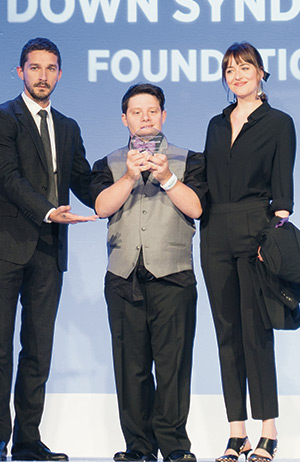 A modern-day spin on Huckleberry Finn, The Peanut Butter Falcon follows Zak, a 22-year-old man with Down syndrome, who escapes the nursing home where he lives to pursue his ambition of professional wrestling. The budding wrestler hopes to meet retired wrestling legend “The Salt Water Redneck,” played by Thomas Haden Church, who lives in rural North Carolina. On his journey, Zak meets a crab fisherman and small-time outlaw named Tyler (played by LaBeouf), who becomes Zak’s ally.
A modern-day spin on Huckleberry Finn, The Peanut Butter Falcon follows Zak, a 22-year-old man with Down syndrome, who escapes the nursing home where he lives to pursue his ambition of professional wrestling. The budding wrestler hopes to meet retired wrestling legend “The Salt Water Redneck,” played by Thomas Haden Church, who lives in rural North Carolina. On his journey, Zak meets a crab fisherman and small-time outlaw named Tyler (played by LaBeouf), who becomes Zak’s ally.
Lucky Treehouse, one of the film’s production companies, describes the pair’s adventure: “Together they wind through deltas, elude capture, drink whiskey, find God, [and] catch fish.” Tyler and Zak are eventually joined by Eleanor (played by Johnson), an employee from Zak’s nursing home who is searching for him as well as answers of her own.
“Many people struggle to maintain a regular life, not because of their disabilities, but because of others’ disbelief in their talents … I am making [this film] for the people who believe it is OK to dismiss them,” Nilson writes on Lucky Treehouse’s production website.
AN A-LIST CAST Gottsagen was excited to work alongside the Hollywood A-list actors. LaBeouf is known for roles in movies such as Transformers, Holes, and Borg vs McEnroe. Johnson is known for films including How to be Single and for starring in the Fifty Shades of Grey franchise. Church has acted in TV shows and movies since 1980 and most recently played the lead in the HBO series Divorce.
Bruce Dern, a two-time Oscar nominee, plays Carl, Zak’s roommate at the nursing home. Producers for the movie include Ron Yerxa and Albert Berger, the talent behind Cold Mountain and Little Miss Sunshine. T Bone Burnett, the creative genius behind numerous award-winning film scores, produced the soundtrack.
In addition to Lucky Treehouse, the film was produced by Armory Films, Nut Bucket Films, and Tvacom Film and TV.
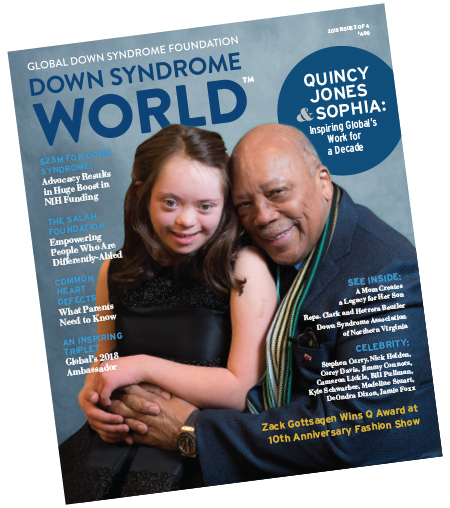 This article was published in the award-winning Down Syndrome World™ magazine. Become a member to read all the articles and get future issues delivered to your door!
This article was published in the award-winning Down Syndrome World™ magazine. Become a member to read all the articles and get future issues delivered to your door!THE MAKING OF A FALCON Despite its impressive cast and crew, The Peanut Butter Falcon’s true star is Gottsagen, 33, who credits his first acting role as the star of a natural childbirth instructional video on April 22, 1985. He was the first student to be fully included in a Palm Beach County public school, and in 2004, he earned a theater degree from the A.W. Dreyfoos School of the Arts in West Palm Beach. Currently, Gottsagen lives independently in Boynton Beach, Florida, and works at a local movie theater.
For more than 10 years, Gottsagen worked with Zeno Mountain Farm, a nonprofit that hosts camps for people of all abilities in Vermont, California, and Florida. He worked with the nonprofit’s Film Camp and appeared in movies such as Burning Like a Fire and Life of a Dollar Bill. While filming a western called Bulletproof, he got involved with a documentary titled Becoming Bulletproof, which followed the movie’s actors and probed the question of why more actors who are differently-abled don’t appear in films. The movie was nominated at numerous film festivals and won the Best Film, Audience Choice, Festival Prize, Grand Jury, and Best Documentary awards at the Cleveland International Film Festival, Heartland Film Festival, Massachusetts International Film Festival, New Hampshire Film Festival, and the Vail Film Festival respectively. It was screened at the Smithsonian Museum’s 25th anniversary of the Americans with Disabilities Act in July 2015 — Gottsagen was the keynote speaker at the event.
But it gets even better. In a March 2018 Esquire cover story interview, LaBeouf gave Gottsagen some serious credit for sobering up. In the cover story, LeBeouf not only alludes to Gottsagen’s acting chops, he states, “That mother#>@%&* is magical.”
For Gottsagen, he is centered knowing he has an extended family of actors and film crews. He appreciates the opportunity to live out his dream of being an actor and has already started on two additional productions.
“I hope that thousands of fans see [The Peanut Butter Falcon],” Gottsagen told the Palm Beach Post. “I hope that they will love it, and the cast, a lot, including myself.”
In May, the Global Down Syndrome Foundation hosted a special screening of The Peanut Butter Falcon at the Sie FilmCenter in Denver. It was attended by a focus group of local self-advocates and families, as well as Gottsagen and his mother, Shelley, who flew in from Florida.
Shelley is an extremely articulate but quiet woman who clearly has a remarkable relationship with her son. While she is awed by how outgoing her son is, she is not surprised at his career choice.
“Zack told me when he was 3 years old, and every year after that, he was going to be an actor,” she told the audience. “I am definitely proud at what he has accomplished.”
Gottsagen, music and film producer Berger, and director Schwartz did a Q&A after the screening, and the audience left inspired and thoroughly entertained. The film is currently in post-production and will be released later this year.
Gottsagen’s talent and his many accomplishments have earned him Global’s 2018 Quincy Jones Exceptional Advocacy Award along with award-winning Irish actor, Colin Farrell. The award will be presented at Global’s 10th Anniversary Be Beautiful Be Yourself Fashion Show, scheduled for Saturday, Oct. 20, in Denver.
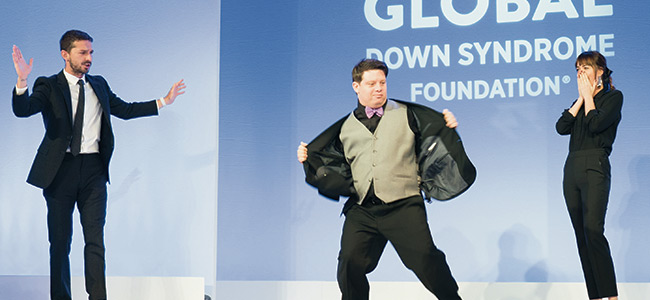
Like this article? Join Global Down Syndrome Foundation’s Membership program today to receive 4 issues of the quarterly award-winning publication, plus access to 4 seasonal educational Webinar Series, and eligibility to apply for Global’s Employment and Educational Grants.
Register today at downsyndromeworld.org!
Pioneering Care for People with Down Syndrome
November 8th, 2018 by Global Down Syndrome Foundation
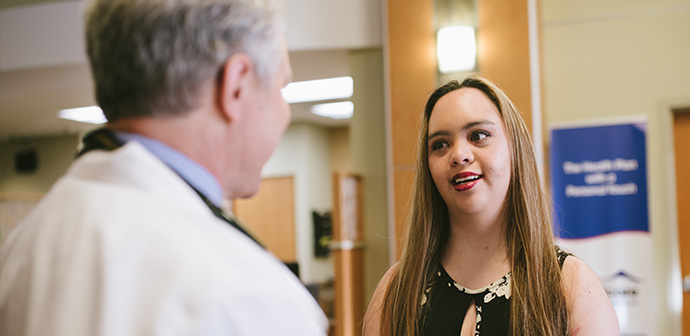
From Down Syndrome World Issue 3 2018
As one of the lead authors of the Medical Care Guidelines for Adults with Down Syndrome, George T. Capone, M.D., is continuing his life’s work of improving evidence-based medical care for people with Down syndrome.
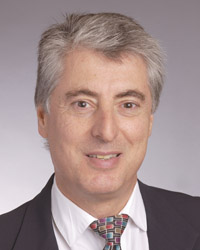 FOR THE PAST 30 YEARS, George T. Capone, M.D., has specialized in providing quality care for patients with Down syndrome, always pushing for better evidence-based treatment and interventions. As a research scientist, Director of the Kennedy Krieger Institute’s Down Syndrome Clinic and Research Center (DSCRC), and Associate Professor of Pediatrics at the Johns Hopkins University School of Medicine, he has seen more than 2,500 patients, ranging in age from infants to seniors. Dr. Capone has contributed to improved care since the 1980s, and he continues to be concerned about health care for adults with Down syndrome.
FOR THE PAST 30 YEARS, George T. Capone, M.D., has specialized in providing quality care for patients with Down syndrome, always pushing for better evidence-based treatment and interventions. As a research scientist, Director of the Kennedy Krieger Institute’s Down Syndrome Clinic and Research Center (DSCRC), and Associate Professor of Pediatrics at the Johns Hopkins University School of Medicine, he has seen more than 2,500 patients, ranging in age from infants to seniors. Dr. Capone has contributed to improved care since the 1980s, and he continues to be concerned about health care for adults with Down syndrome.
Dr. Capone’s extensive knowledge, experience, and passion to improve care are the primary reasons he was tapped to join a team of physicians and researchers updating the Medical Care Guidelines for Adults with Down Syndrome, a project funded by the Global Down Syndrome Foundation.
AN EARLY SUPPORTER OF TRANSLATIONAL RESEARCH
Dr. Capone’s career treating people with Down syndrome took root in 1988, when he began a neurobiology fellowship at Johns Hopkins University School of Medicine. At the time, researchers at Johns Hopkins, including his mentor Joseph T. Coyle, M.D., were conducting groundbreaking genetic research on the link between Down syndrome and Alzheimer’s disease. Among the many projects he saw occurring in Dr. Coyle’s lab was research that used TS16 mouse models to investigate the impact that three copies of chromosome 21 — the defining characteristic of Down syndrome — has on early-onset Alzheimer’s disease. It was some of the earliest research on the subject.
 This article was published in the award-winning Down Syndrome World™ magazine. Become a member to read all the articles and get future issues delivered to your door!
This article was published in the award-winning Down Syndrome World™ magazine. Become a member to read all the articles and get future issues delivered to your door!The time spent in Dr. Coyle’s lab helped lay the foundation for Dr. Capone’s interest in how that research could be directly applied to the health and well-being of patients. In the early 1990s, Dr. Capone joined the Kennedy Krieger Institute. There, he recognized that the DSCRC provided ample opportunity to develop hypotheses and research questions on the neurobiological and neurobehavioral basis of cognitive impairment associated with Down syndrome. The clinic’s diverse patient population allowed for “person-centered clinical research focusing on the medical and mental health conditions we see on a daily basis.” Such research, he knew, would benefit not only people with Down syndrome but also patients with its co-occurring conditions, such as Alzheimer’s disease, sleep apnea, and heart conditions.
Under Dr. Capone’s leadership, the DSCRC has conducted studies on a range of conditions, including autism-spectrum disorders and attention-deficit/hyperactivity disorder. His research has led to the characterization of autism in children with Down syndrome, uncommon neurobehavioral and developmental profiles of children and teenagers with Down syndrome, and developmental regression in people of all ages with the condition.
He has also designed and conducted several clinical pharmacology trials for drugs intended to improve memory and cognition in both children and adults, including risperidone, guanfacine, and rivastigmine.
“The science is fascinating, and the associated medical conditions are complex and perplexing,” Dr. Capone said. “The families I work with are the best, and the children and adults I interact with always amaze me.”
FORGING NEW PATHS FOR ADULT MEDICAL CARE
Dr. Capone agrees that the increased knowledge and advocacy among parents and healthcare professionals, the establishment of specialized clinics such as the DSCRC, and advancements in medical-surgical care for children have all progressed health for people with Down syndrome. Yet, despite contributions to the field of care for people with Down syndrome, more research is necessary to improve lives.
“We need to better understand the etiology-pathogenesis and risk factors associated with certain medical conditions, as well as what treatment approaches and prevention strategies are most beneficial to our patients,” Dr. Capone explained. “We also need a more organized approach to managing data sets to improve clinical decision-making, patient and caretaker outcomes, and quality of life.”
The Medical Care Guidelines for Adults with Down Syndrome will go a long way toward improving clinical decision-making and health outcomes. The current guidelines available for adults with Down syndrome were last updated in 2001 and do not adequately reflect the more than doubling of life span for people with Down syndrome since the 1980s. As adults with Down syndrome are living longer, they require care specific to their unique aging experience and risk factors.
“Many physicians in adult medicine do not have adequate training to care for people with genetic and neurodevelopmental conditions,” Dr. Capone said. “The medical conditions experienced by adults with Down syndrome can appear overwhelming and beyond the reach of many physicians, but with sufficient resources and training, we can teach primary care and other adult healthcare providers how to provide this care with confidence.
“Coming up with medical care guidelines will expose how little we really know about ‘best practices’ when caring for aging adults with Down syndrome and chronic medical conditions,” he added. “I hope it will stimulate further interest and investigation into this often neglected aspect of clinical research.”
To learn more about the Medical Care Guidelines for Adults with Down Syndrome, please visit globaldownsyndrome.org/medical-care-guidelines.
ADVICE FOR FAMILIES AND SELF-ADVOCATES
George T. Capone, M.D., Director of the Down Syndrome Clinic and Research Center at Kennedy Krieger Institute and Associate Professor of Pediatrics at the Johns Hopkins University School of Medicine, has some advice, learned over a 30-year career, to pass along to people with Down syndrome and their families.
Don’t get caught up in comparisons.
“If your child seems different compared to other children you know with Down syndrome, don’t despair,” Dr. Capone said. “All our children are unique, and we should rejoice in these differences.”
Exercise body and mind.
“Stay physically and mentally active once you leave high school or post-secondary school,” he said. “Find your own means of self-expression through the performing arts, fitness, hobbies, and fun social activities.”
Connect.
“Stay informed and connected to the larger Down syndrome community of families and selfadvocates,” he advised.
Like this article? Join Global Down Syndrome Foundation’s Membership program today to receive 4 issues of the quarterly award-winning publication, plus access to 4 seasonal educational Webinar Series, and eligibility to apply for Global’s Employment and Educational Grants.
Register today at downsyndromeworld.org!
The Importance of Immune System Dysregulation in People with Down Syndrome
November 8th, 2018 by Global Down Syndrome Foundation
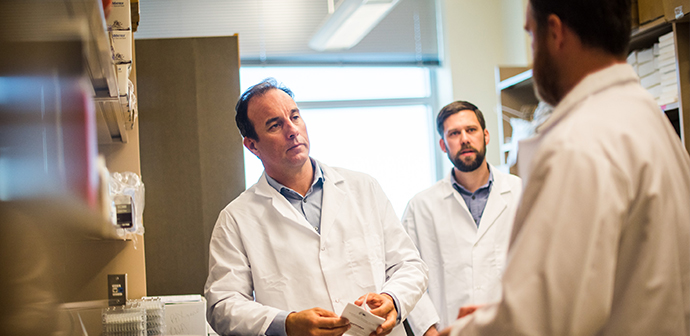
From Down Syndrome World Issue 3 2018
How does an extra copy of chromosome 21 drive the developmental and clinical features of Down syndrome? This question has been the subject of many investigations since 1958, when Jérôme Lejeune reported the Presence of trisomy 21 in cells of people with Down syndrome. The answer has remained elusive.
NOW, RESEARCH FROM the Linda Crnic Institute for Down Syndrome points to dysregulation of the immune system as a mechanism by which the extra chromosome would cause this multiorgan, multi-system condition. The implications of these results are profound, because they not only provide a new conceptual framework for future research, but also illuminate avenues for the development of novel diagnostic and therapeutic opportunities to improve health outcomes in Down syndrome. Of the more than 20,000 genes encoded in the human genome, chromosome 21 carries fewer than 300, the lowest number of genes on any human chromosome. While consensus among scientists is that Down syndrome is a “polygenic condition,” a condition caused by increased activity of more than one gene, it is also agreed that not all genes on chromosome 21 would contribute equally to the condition. If one were to select a random group of 300 genes, it is recognized that only a few genes would be master regulators of cellular and organismal function. What then are the master regulator genes on chromosome 21 with the greatest impact on human biology? To address this question, scientists at the Crnic Institute employed an approach known as functional genomics, which involves measurements of the activity of thousands of genes across the entire genome, to identify the gene networks most impacted by trisomy 21.
OVERACTIVE IMMUNE SYSTEMS?
The first set of results from the analysis of cells of people with Down syndrome (Sullivan et al., 2016) revealed that trisomy 21 causes constitutive activation of the gene network known as the Interferon response, a key branch of the immune system responsible for fighting off viral infections. In cells from typical people, the Interferon response was dormant, but cells from people with Down syndrome seemed to be fighting off a viral infection that just wasn’t there. These results immediately drove attention to four genes on chromosome 21 known as the Interferon receptors, which are required for cells and tissues to respond to a viral infection and whose triplication could potentially trigger constant activation of this arm of the immune system.
The second set of results from the analysis of blood samples (Sullivan et al., 2017) revealed signs of chronic autoinflammation in people with Down syndrome. Measurements of approximately 4,000 different proteins in the blood identified about 300 that are differentially abundant between people with and without Down syndrome, with about half of those 300 proteins being involved in the immune system. Importantly, this study revealed signs of both constant activation and exhaustion of different aspects of the immune system, with obvious ties to the Interferon response. It is well established that the Interferon response enhances anti-viral defenses, but too much Interferon activity eventually weakens antibacterial defenses. Indeed, the results of the blood analysis were consistent with a type of immune dysregulation caused by lifelong hyperactivation of the Interferon response.
Noteworthy, both studies revealed, among people with Down syndrome, strong inter-individual variation in the degree of activation of the Interferon response and autoinflammation, which could potentially be linked to the obvious clinical diversity in this population.
 This article was published in the award-winning Down Syndrome World™ magazine. Become a member to read all the articles and get future issues delivered to your door!
This article was published in the award-winning Down Syndrome World™ magazine. Become a member to read all the articles and get future issues delivered to your door!GREATER INSIGHTS AND POTENTIAL TREATMENTS
These results have triggered a flurry of activity at the Crnic Institute to answer key follow-up questions: Which of the symptoms of Down syndrome could be explained by the observed immune dysregulation? To what degree is the immune dysregulation caused by triplication of the four Interferon receptors versus other genes on chromosome 21? What would be the diagnostic value of measuring immune dysregulation to predict the risk of the same person developing certain co-occurring diseases or conditions? What would be the therapeutic value of medications that inhibit the Interferon response and accompanying inflammatory process?
Several key facts are generating much enthusiasm in the pursuit of these answers. First, it is well established that a hyperactive Interferon response has negative effects on human development, as illustrated by type I Interferonopathies, a newly recognized class of genetic conditions caused by gene mutations that lead to activation of the Interferon response and share many symptoms with Down syndrome. Second, the pharmaceutical industry has developed many medications that inhibit the Interferon response, some of which are approved for the treatment of autoinflammatory conditions, such as rheumatoid arthritis, and are currently being tested for the treatment of autoimmune conditions more prevalent in Down syndrome, such as alopecia areata and vitiligo. Third, pioneer studies in mouse models of Down syndrome completed by Lenny Maroun, Ph.D., currently at the Crnic Institute, demonstrated that reducing the Interferon response improves the development of these mice (Maroun et al., 2000).
Altogether, this body of research justifies a strong investment in the study of the immune system in Down syndrome, with the obvious potential to develop diagnostic and therapeutic strategies to improve the well-being of those living with trisomy 21.
To learn more about research at the Crnic Institute, visit globaldownsyndrome.org/our-story/linda-crnic-institute.
References:
Maroun, L.E., Heffernan, T.N., and Hallam, D.M. Partial IFN-alpha/ beta and IFN-gamma receptor knockout trisomy 16 mouse fetuses show improved growth and cultured neuron viability. Journal of Interferon & Cytokine Research: the Official Journal of the International Society for Interferon and Cytokine Research. 2000; 20, 197–203.
Sullivan, K.D., Evans, D., Pandey, A., Hraha, T.H., Smith, K.P., Markham, N., Rachubinski, A.L., Wolter-Warmerdam, K., Hickey, F., Espinosa, J.M., et al. Trisomy 21 causes changes in the circulating proteome indicative of chronic autoinflammation. Scientific Reports. 2017; 7, 14,818.
Sullivan, K.D., Lewis, H.C., Hill, A.A., Pandey, A., Jackson, L.P., Cabral, J.M., Smith, K.P., Liggett, L.A., Gomez, E.B., Galbraith, M.D., et al. Trisomy 21 consistently activates the interferon response. 2016; eLife. 5.
Like this article? Join Global Down Syndrome Foundation’s Membership program today to receive 4 issues of the quarterly award-winning publication, plus access to 4 seasonal educational Webinar Series, and eligibility to apply for Global’s Employment and Educational Grants.
Register today at downsyndromeworld.org!
The Salah Foundation: A Brave Family Making a Huge Difference
October 23rd, 2018 by Global Down Syndrome Foundation
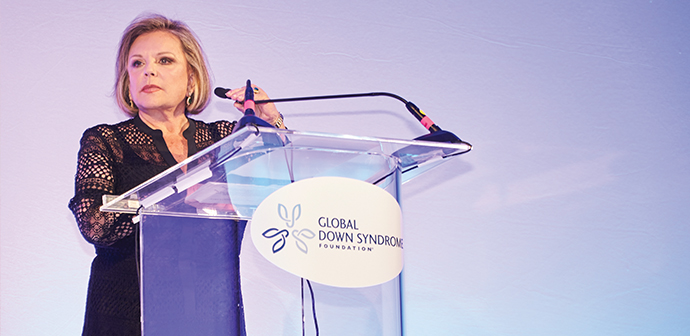
From Down Syndrome World Issue 3 2018
The Salah family and the Salah Foundation are giving countless people hope, life-changing support, and a brighter future. For the Global Down Syndrome Foundation, the Salah Foundation is making its dream come true — the opening of a state-of-the-art education center for the differently-abled.
THE SALAH FAMILY is originally from Lebanon, a country of great maritime and cultural history, where even in the second millennium BC, people living in the area cultivated land in a sophisticated society. The ancient Lebanese were creators of the oldest known 24-letter alphabet, and eventually, their alphabet would influence Hebrew, Aramaic, and other languages throughout the Mediterranean region. More recent history has been tumultuous for Lebanon, including during World War I (1914–1918), after which the country was put under the direct control of France. It was during this difficult time, in 1919, that Joseph and Nora Salah courageously left their Maronite Christian hometown and emigrated from Lebanon to the United States in pursuit of a better life.
With little money and unable to speak English, the Salahs worked hard to make a life for themselves and their three children: Isabel, James, and George. James “Jim” Salah was a natural and brilliant entrepreneur. He started his own construction business in Boston, handling some of the city’s largest utility projects, and then branched out into real estate and heavy equipment leasing, and his companies prospered. Upon his death in 2009, The Salah Foundation was founded and now serves as a living tribute to his lifelong success and generosity. Today, Jim’s commitment to philanthropy lives on through his niece, Noreen Salah Burpee, who serves as Executive Director of the foundation.
A FORMIDABLE FORCE FOR GOOD
Under the direction of Burpee, The Salah Foundation has become a formidable force for good. “We have a special interest in self-sufficiency programs,” Burpee explains. “We seek to improve the lives of the under educated, undernourished, and medically needy to become productive and responsible citizens.” The foundation has an emphasis on the economically disadvantaged, young, elderly, and disabled. “The need for responsible philanthropy is almost overwhelming,” Burpee said. “Our greatest inspiration is when we witness someone breaking the cycle of poverty, or ignorance, or homelessness.” Burpee has tapped her own three children — Fred Churbuck, Megan Fearnow, and George J. Taylor — to share the responsibility of philanthropy. “It is a privilege to work together as a family ,” Burpee explains. “Each board member brings their own personal passions to the table. We are a brave family and not afraid to fund the underserved.” Some important organizations that are close to their hearts include The Salah Foundation’s Children’s Hospital at Broward Health and The Noreen Salah Burpee Adult Infusion Center, an inpatient cancer center, both in Fort Lauderdale, Florida, and most recently, The Salah Foundation Learning Zone at the future Global Down Syndrome Foundation Education Center of Excellence. The Salah Foundation connected with Global’s dedication to research, medical care, education, and advocacy for people with
Down syndrome. When the family learned about the lack of research funding and medical care and the discrimination against people with Down syndrome, Burpee says she was “very moved by each child with Down syndrome and their supporting families. The very thought that their needs and the needs of children like them were
not being met made us very sad.” “Research is the key,” she continues. “People must be educated on the difficulties and lives of these children so they can live productive, meaningful lives, and Global is doing just that.”
 This article was published in the award-winning Down Syndrome World™ magazine. Become a member to read all the articles and get future issues delivered to your door!
This article was published in the award-winning Down Syndrome World™ magazine. Become a member to read all the articles and get future issues delivered to your door!TWO GENERATIONS OF IMPACT GIVING
Burpee’s son, Fred Churbuck, was the first to experience Global at one of our annual Be Beautiful Be Yourself Fashion Show fundraisers. Churbuck admits that at first he didn’t want to attend. “I thought I would feel uncomfortable,” he says. “I had never met a person with Down syndrome.” Then something magical happened. The keynote speaker, Tim Harris, came out, and his speech touched Churbuck. “He was so energetic and articulate, and then he turns to the audience and says, ‘I’m living my dream. You ask yourself, are you living yours? Are you the best you can be?” Churbuck retells the moment. “For the next few weeks, I had all my marketing team watch Tim on video, and we were all inspired.” Over the next two years, The Salah Foundation generously funded Global’s important adult life skills classes and a post – secondary research study that spelled out, for the first time , how adults with Down syndrome best learn life skills and improve their cognitive abilities. “The support that Salah provided to our class and research helped us to make adults more self-sufficient while being able to create and share best practices,” says Bryn Gelaro, LSW (licensed social worker), Global’s Director of Adult Initiatives and Special Projects. Then in 2017, four years to the date of Churbuck at tending Global’s annual fundraiser, the Salah family at tended with a game-changing surprise announcement. Burpee got on stage and announced a new pledge to help under write Global’s future Education Center of Excellence with the lar gest single donation Global has received — $1 million. “We are out of our minds grateful!” says Michelle Sie Whitten, President and CEO of Global. “The Salah Foundation was amazingly generous, and it was so hard to keep it a secret — literally even our board didn’t know. We were so intent on making it a surprise. There were 1,400 people in attendance, we were sold out, and then the lovely, articulate Noreen gets up there and just makes the announcement. Even Quincy Jones, John C. McGinley, Jamie Foxx, and Eva Longoria were high-fiving each other!” Burpee recalls, “When I made that pledge and hear d the gasps and then the applause, I looked to my family’s table and saw them standing and wildly applauding. It took my breath away.” The 2017 Be Beautiful Be Yourself Fashion Show was the largest grossing Global fundraiser to date.
INCLUSION, INSPIRATION, AND ACHIEVEMENT
Global’s future Education Center will open in 2019. The Education Center will house The Salah Foundation Learning Zone where transformative educational programs for adults and children with Down syndrome will be held. To better understand the needs of the local community, Global organized an informal listening campaign and survey resulting in 26 disability organizations identifying programs and classes that could take place in The Salah Foundation Learning Zone. Examples of programs already being planned are cooking classes, computer classes, and summer center-based learning classes so children with Down syndrome can be better prepared for the school year. The Education Center is nestled between the Cherry Creek neighborhood of over 1,000 residents and the vibrant Cherry Creek North shopping district with over 600 businesses and 8 ,000 employees. A key focus of the center will be vocational training with the long-term goal of having 30 to 40 people who are differently abled working in Cherry Creek North. “We are not just a check-writing foundation but a partner in philanthropy,” Burpee says. The partnership with The Salah Foundation and the Salah family will surely empower the dreams of those with Down syndrome and the differently-abled for years to come.
The Salah Foundation is a private foundation that makes investments in nonprofits by invitation only.
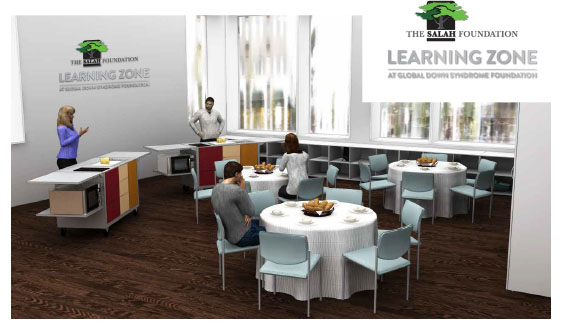
Draft rendering of The Salah Foundation Learning Zone at Global Down Syndrome Foundation Courtesy of OfficeScapes and ArtHouse Design
Like this article? Join Global Down Syndrome Foundation’s Membership program today to receive 4 issues of the quarterly award-winning publication, plus access to 4 seasonal educational Webinar Series, and eligibility to apply for Global’s Employment and Educational Grants.
Register today at downsyndromeworld.org!
A Center For Life-Changing Care
October 12th, 2018 by Global Down Syndrome Foundation
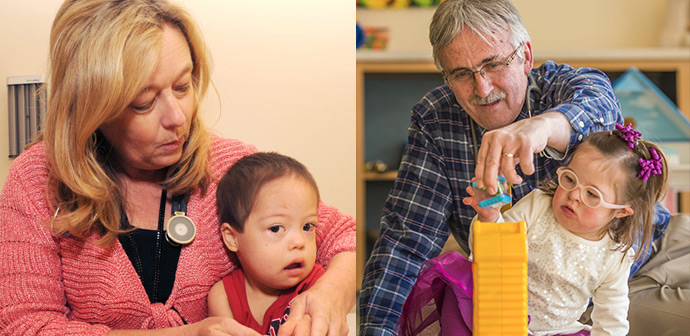
From Down Syndrome World Winter 2017
Since its inception in 2010, The Anna and John J. Sie Center for Down Syndrome at Children’s Hospital Colorado has championed healthy starts and bright futures by caring for the unique medical needs of young people with down syndrome.
WHEN HER DAUGHTER, Sophia, was born with Down syndrome 13 years ago, Michelle Sie Whitten, President and CEO of the Global Down Syndrome Foundation, traveled more than 1,000 miles from her home in Denver to the Thomas Center for Down Syndrome Services at Cincinnati Children’s Hospital Medical Center to find the specialized medical care Sophia needed. After talking with other local families making the same trek, Whitten began exploring what it would take to bring a similar center to Colorado.
“The initial thinking was, ‘Why should we have to travel?’” Whitten said. “Why shouldn’t Colorado have a fabulous, world-class pediatric medical center for kids with Down syndrome?”
From Whitten’s due diligence and efforts, and funding from Sophia’s grandparents, Anna and John J. Sie, came the Sie Center, a medical center that opened in 2010 at Children’s Hospital Colorado as part of the Linda Crnic Institute for Down Syndrome.
PUTTING POTENTIAL WITHIN REACH
“There’s a lot of talk about people with Down syndrome reaching their full potential,” Whitten said. “At Global, we feel very strongly that without good health, you’ll never reach your full potential.”
Helping children and young adults up to age 21, the Sie Center’s team of medical professionals provides the expert care and resources needed to manage a wide range of physical and behavioral health issues associated with Down syndrome. These specialists work closely with primary care providers at Children’s Hospital Colorado to coordinate care and deliver services through seven clinics.
At the Medical Clinic, a developmental pediatrician, nurse, and physical therapist evaluate children’s medical issues and physical growth to develop a comprehensive care plan. During visits, kids may also see an occupational therapist as needed.
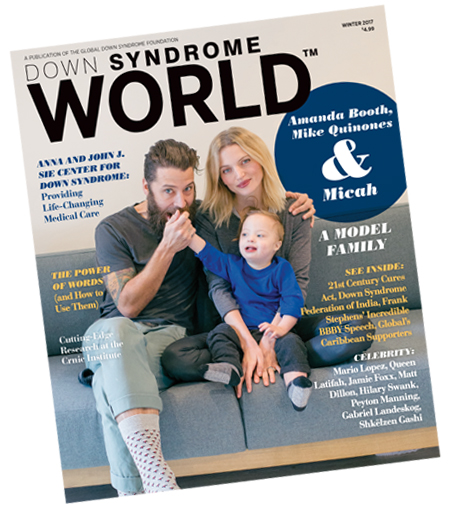 This article was published in the award-winning Down Syndrome World™ magazine. Become a member to read all the articles and get future issues delivered to your door!
This article was published in the award-winning Down Syndrome World™ magazine. Become a member to read all the articles and get future issues delivered to your door!The Sie Center’s Feeding Clinic offers families an opportunity to visit with a feeding and swallowing specialist, developmental pediatrician or nurse practitioner, physical therapist, and social worker. These providers help parents address muscle weakness and other issues with eating and drinking that can interfere with a child’s ability to breast-feed, chew, and/or swallow and therefore raise his or her risk of silent aspiration.
The ENT Clinic helps manage diseases of the ear, nose, and throat, including chronic ear infections, airway obstructions, and hearing loss. Approximately 70 to 75 percent of kids with Down syndrome deal with hearing loss, according to the Eunice Kennedy Shriver National Institute of Child Health and Human Development.
The Sie Center is the first center of its kind to have a full-time School-Age Clinic. The clinic’s educational specialist and psychologist help families develop individualized education programs and identify medical problems that may contribute to difficulties with behavior and learning. For example, a child who is acting out in gym class may do so because his feet hurt — not because he doesn’t want to participate in the activity.
“These specialists are like medical detectives,” Whitten said. “They work very closely to understand what’s happening at school and what modifications, support, and resources may be helpful.”
Through the Infant Clinic, babies receive a complete evaluation of their physical health to identify medical needs at a very early age.
At the Sleep Clinic, physicians evaluate children for sleep disorders and help parents troubleshoot solutions for common challenges, such as using a continuous positive airway pressure machine.
Currently, the Telemedicine Clinic connects Sie Center specialists with providers in Durango, Colorado, who treat children with Down syndrome, but Whitten said the goal is to expand the service to benefit the maximum possible number of patients.
In addition to these clinics, the Sie Center recently instituted a mental wellness program. Often, young people experiencing regression or warning signs of depression and anxiety are told that these symptoms are complications related to Down syndrome. However, these issues may be treatable mental illnesses, just as they would be for typical young adults.
A GLOBAL IMPACT
The clinic’s specialists are actively involved in clinical research projects that will help doctors around the world improve care for children with Down syndrome.
Arwen Jackson, MA, CCC-SLP; Jennifer Maybee, OTR, MA, CCC-SLP; Maura K. Moran; Kristine Wolter-Warmerdam; and Francis Hickey, M.D., FAAP, all with the Sie Center or Children’s Hospital Colorado, published their latest study on aspir ation in the international journal Dysphagia.
“Doctors at Children’s Hospital Colorado are also joint appointees at the University of Colorado School of Medicine, so we’re able to get a lot of medical students who are required to do a fellowship or some kind of rotation,” Whitten said. “Working with the Sie Center gives them an in-depth look at the best way to provide medical care to patients with Down syndrome, and that carries over to the care they give in the future.
“The services the Sie Center provides are nothing short of life-changing, if not lifesaving,” Whitten added. “I’ve spoken with parents who’ve told me, ‘I was always afraid, but now that I’m at the Sie Center, I understand what’s going on. I know what I’m supposed to be doing for my child’s health.’”
CARE COUNTS
The Anna and John J. Sie Center for Down Syndrome at Children’s Hospital Colorado is one of the largest centers of its kind in the world. Here’s a snapshot of the clinic’s impact:
• More than 1,500 visits take place at the Sie Center each year.
• The Sie Center serves approximately 1,300 patients annually.
• The pediatricians, specialists, and therapists at the Sie Center have more than 80 years collective experience caring for children with Down syndrome.
• Families representing 26 states, seven countries, and Puerto Rico seek care at the Sie Center.
Global provides continued financial support for the Sie Center. Visit The Sie Center web page to learn how you can help efforts to provide medical care for children and young adults with Down syndrome.
Like this article? Join Global Down Syndrome Foundation’s Membership program today to receive 4 issues of the quarterly award-winning publication, plus access to 4 seasonal educational Webinar Series, and eligibility to apply for Global’s Employment and Educational Grants.
Register today at downsyndromeworld.org!

 Experience our inspirational and groundbreaking videos and photos. Our children and self-advocates are beautiful AND brilliant!
Experience our inspirational and groundbreaking videos and photos. Our children and self-advocates are beautiful AND brilliant! Make sure your local Representatives are on the Congressional Down Syndrome Task Force.
Make sure your local Representatives are on the Congressional Down Syndrome Task Force.